How to set up a home practice corner on a budget
If you want a focused, inviting place to practice without spending much, this is a hands-on guide I used. I cover how I choose the best corner (checking light and noise), map the floor and mark clearances, buy a few multi-use budget items, control sound, and build a short daily routine that sticks. I also share a simple, reliable daily practice routine you can adapt in minutes. How to set up a home practice corner on a budget is easier than it sounds — small, deliberate moves make the biggest impact.
Key takeaways
- Pick a quiet, well‑lit corner and mark the floor with tape.
- Start with three versatile, low-cost items: a mat, foldable chair, and multi‑use stand.
- Practice short daily blocks (15–25 minutes) and keep a simple routine.
- Use vertical storage, rugs, and curtains for sound control.
- Track progress with quick notes and short weekly recordings.
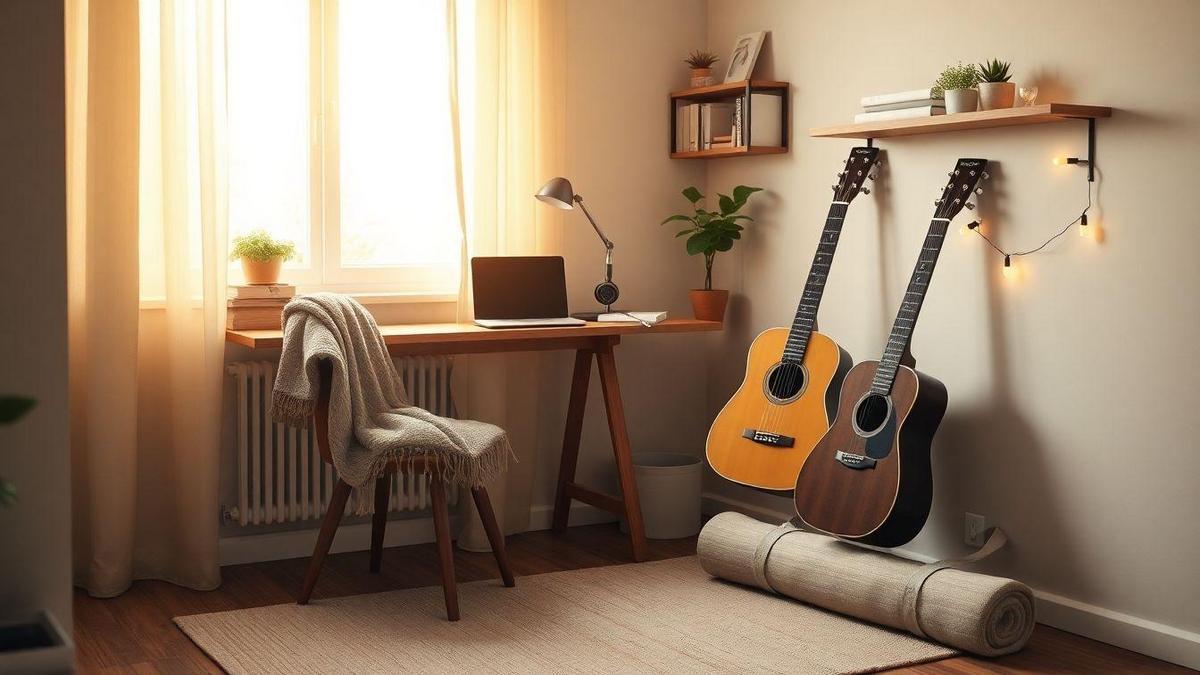
How I pick the best corner (light, noise, and space)
- Check light — natural light is ideal; otherwise make room for a lamp. Good light keeps you alert and makes reading easier.
- Test noise — sit for 1–2 minutes and listen. Loud traffic or constant neighbor noise rules the spot out (guidance on noise exposure at home).
- Measure usable floor space — allow room for instrument, chair/stool, and any pedals or stands. Choose a spot that’s comfortable for at least 10 minutes without having to move things constantly.
Quick rule: favor the corner that balances quiet and light. If two options tie, test both for 10 minutes while playing.
Measure, map, and mark clearances
- Use a tape measure, phone photos, a pencil, and masking tape. See workstation layout and space measurement tips for practical layout ideas you can adapt to an instrument corner.
- Checklist: wall-to-wall width/depth, doors/windows/vents/outlets, ceiling height, low shelves or fixtures.
- Mark pedal and cable clearances so you won’t bump into things when moving.
Table: minimum footprints (approximate)
| Instrument | Minimum footprint | Notes |
|---|---|---|
| Acoustic guitar (playing) | 3 ft × 3 ft | Add room for stand or music stand |
| Keyboard (61 keys) | 4 ft × 2.5 ft | Allow bench and pedal clearance |
| Electric guitar amp | 4 ft × 3 ft | Amp needs breathing room; consider noise |
| Drum pad / practice kit | 5 ft × 5 ft | Use rug to protect floor and quieten sound |
Mark dimensions with masking tape on the floor to test layout — it’s cheap and easy to move.
Budget gear I buy first
If you searched How to set up a home practice corner on a budget, start by buying a few smart, durable items that do double duty.
Three high‑impact items
- Versatile mat (3–6 mm, $15–$50): defines the zone, protects floors, reduces noise.
- Foldable chair (≈ $30–$80): straight back, solid seat for good posture; folds away.
- Multi‑use stand (music/tablet/amp, $20–$60): adjustable, holds sheet music, tablet, or small amp.
Buying tips:
- Set budgets per item; read 5–10 verified reviews and look for photos showing wear.
- Prefer metal frames and reinforced joints for durability.
- Consider whether renting or buying makes sense for your first instrument — our guide to renting vs buying helps with that decision.
- Mix new and used and follow a short checklist before you buy: advice on buying secondhand instruments can save you money and headaches.
- Store mat rolled, stand folded, and chair in a closet to save space. For consumer-focused guidance on safe secondhand purchases, see practical tips for buying secondhand instruments.
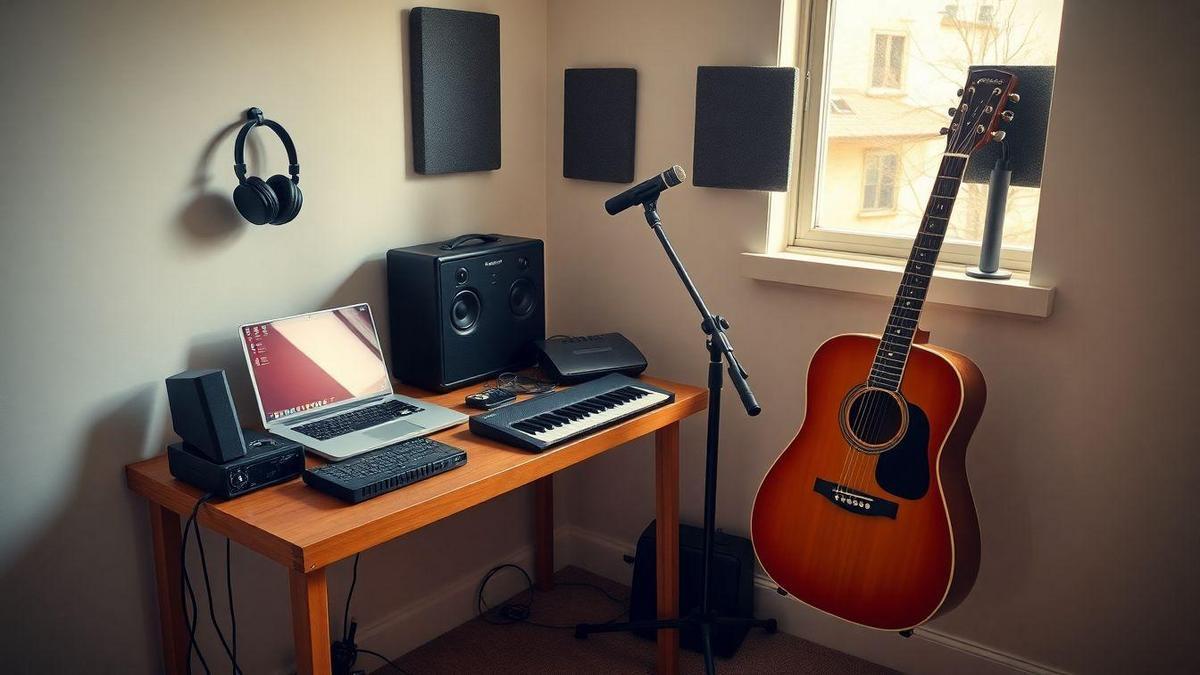
If you’re also deciding which instrument to center your corner around, see a short rundown of affordable beginner instruments and how they fit small spaces.
Designing a practice schedule that sticks
Short, consistent practice beats occasional long sessions — and there’s real benefit to short, focused blocks; for evidence-based habit strategies, see practical habit-forming tips for daily routines. The case for twenty-minute daily sessions explains the mechanics.
- Aim for 15–25 minute daily sessions.
- Pick a fixed time (after coffee, after work, before dinner) and lock it in like an appointment. Use simple rituals that help you enter practice mode so starting feels automatic.
- Sample 20-minute block: 3 min warm-up, 12 min focused skill work, 5 min cool-down/review.
- If you miss a session, do a 5-minute rescue to keep the streak alive.
Plan each session:
- Warm-up: loosen fingers, breath, posture (2–5 minutes).
- Skill work: one specific goal (riff, scale, passage) for focused repeats.
- Cool-down: play slowly, note one win and one target for next time.
Block the same 20 minutes daily for habit formation and track a simple streak on paper or an app for motivation. For a fuller walkthrough on building a daily routine that’s realistic and repeatable, see how to create a simple practice routine.
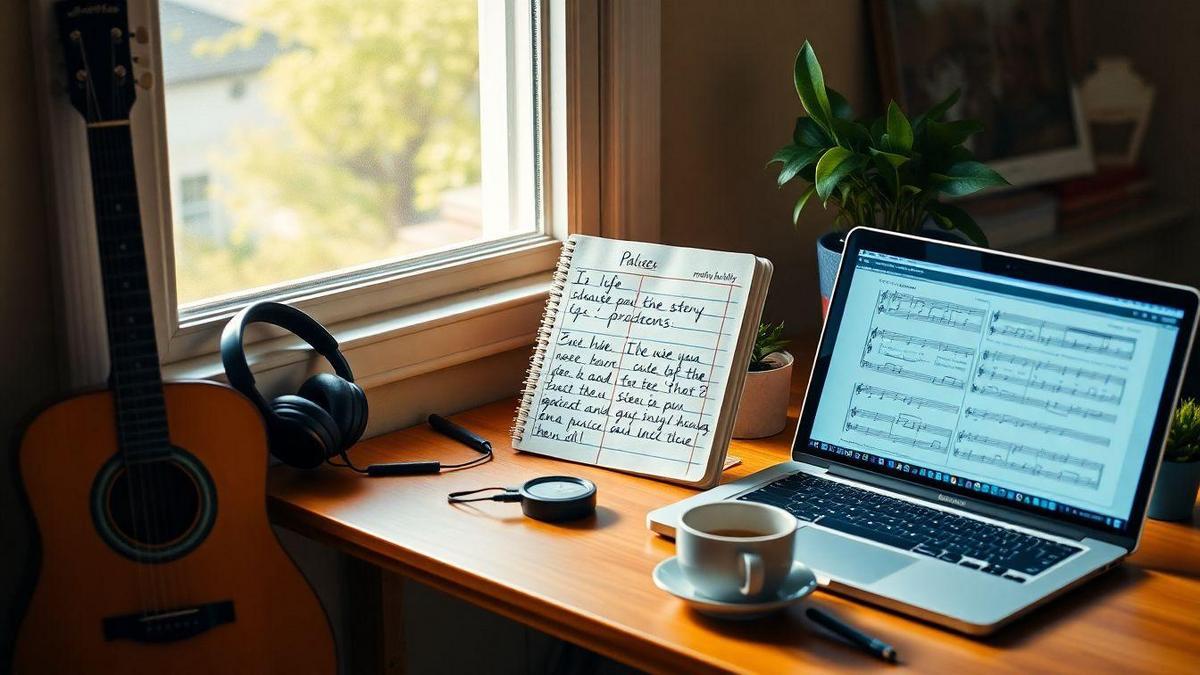
Small-space setup: storage and routines
Make every inch count.
- Use wall hooks and pegboards for instruments, cables, picks, and tuners.
- Choose foldable gear (keyboard stand, chair, music stand) that tucks away.
- Stack amp/pedal boards on a slim shelf — heavy items low, light items high.
- Keep one small bag with essentials (tuner, picks, spare strings, cable) for fast setup.
Quick setup/teardown routines:
- 5-minute setup: unhook instrument, unfold stand, plug tuner/metronome, warm up.
- 3-minute teardown: turn off electronics, fold stand, hang instrument, store picks in a labeled pouch.
Keep your main instrument visible (wall hook or stand) and a lamp/seat nearby to remove friction from starting. If setup feels like a chore, practical tips to make practice fun can help reduce resistance.
Sound control and neighbor tips
You can reduce perceived volume affordably.
- Rugs and curtains: thick rug under the playing spot and heavy curtains over windows or walls absorb reflections.
- Wall hangings and blankets: hang quilts/blankets behind you as low‑cost acoustic panels (basic room acoustics and sound control tips).
- Bookshelves and soft furniture act as diffusers.
- Headphones and low-volume solutions: use a headphone amp, USB audio interface, or practice amp with a headphone out to keep sound to yourself. Dynamic mics pick up less room noise for recording.
Neighbor plan:
- Choose regular practice hours and tell neighbors (a friendly note works).
- Offer contact info and be open to adjustments.
- Use headphones for late sessions and schedule louder practice during daytime. For ideas about staying consistent when practice feels slow or awkward, see staying motivated when progress feels slow.
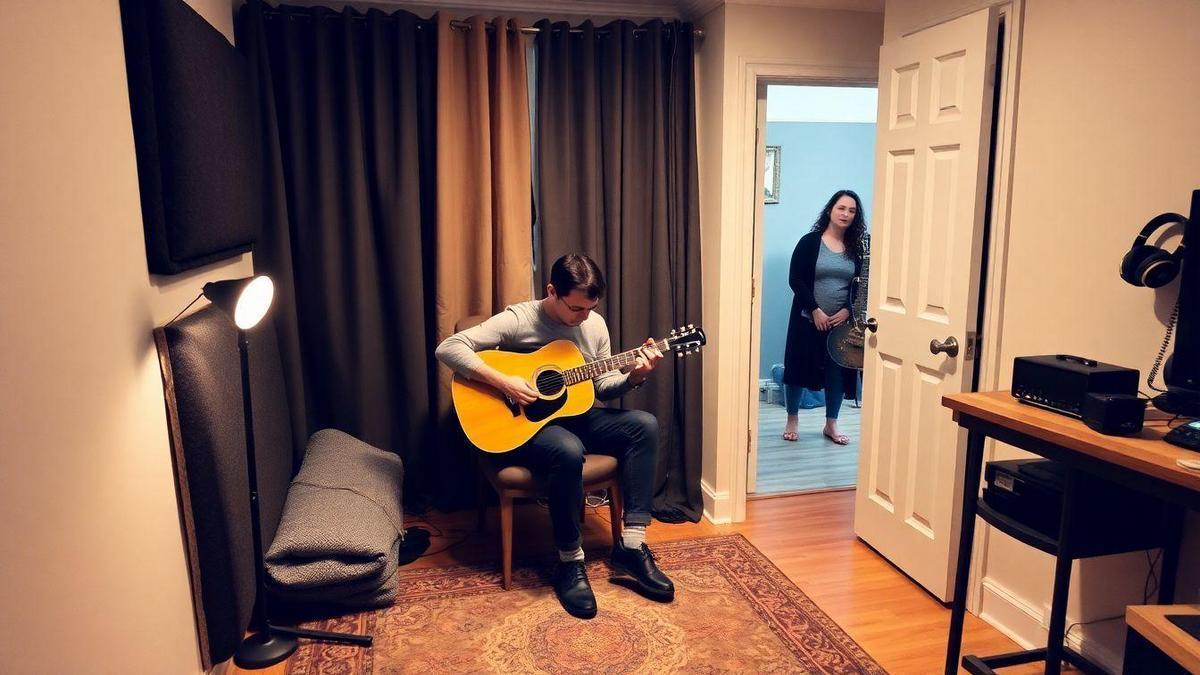
Quick instrument-specific checks (piano & yoga notes)
Piano:
- Set bench height so elbows are level with keys; feet flat on the floor.
- Keep a lamp, metronome (or app), and sturdy sheet holder within reach. For tips on using a metronome without losing patience, see metronome strategies.
- Check bench screws and pedals regularly.
If you’re choosing between keyboard, guitar, or drums for a small corner, compare practical space and style notes in which instrument fits your style.
Yoga/meditation:
- Roll out a dedicated mat and keep a small cushion and timer nearby.
- Low light and a quiet corner help focus; store props together for quick access.
Track progress and stay motivated
Keep tracking simple and consistent.
- Log each short session (one line: time, focus, mood). See whether you should keep a practice journal in this short guide.
- Set micro goals: one riff, one scale, one measure.
- Weekly check-in (1–2 minutes): review logs, pick one problem to fix, choose three tiny goals for the week.
- Record a short clip weekly (30–60 seconds): note one small win and one fix.
Rewards and feedback:
- Give small rewards (snack, new sheet music) for streaks.
- Share short clips with a friend, group, or teacher and ask for one specific piece of feedback. If motivation dips, practical tactics for keeping going are collected in staying motivated when progress feels slow.
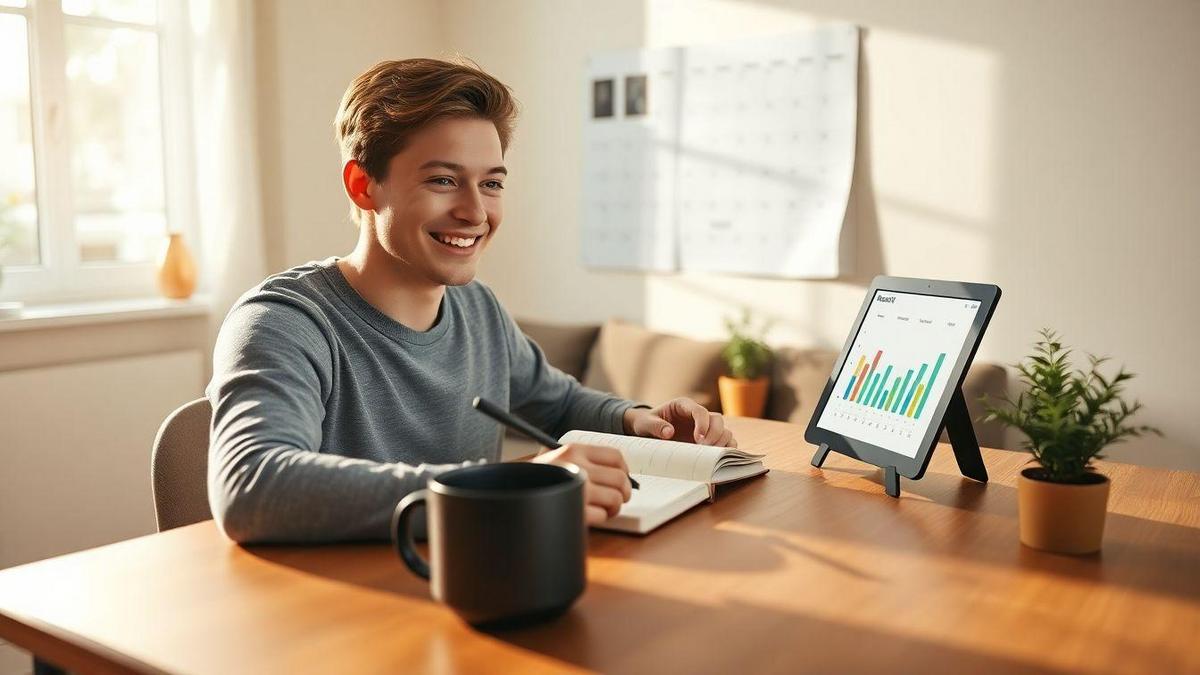
Conclusion
How to set up a home practice corner on a budget comes down to a few high‑impact, low‑cost moves: pick the right corner by checking light and noise, map the floor and tape clearances, and buy a versatile mat, a foldable chair, and a multi‑use stand. Keep sessions short and regular (15–25 minutes), use vertical storage and rugs/curtains to control sound, and make gear visible so it’s easy to grab. Track tiny wins with quick notes and short recordings — consistency beats perfection. Start small, be deliberate, and you’ll practice more and progress faster. For more buying and routine decisions, check these practical reads on buying secondhand and building a simple daily routine.
Want more practical how‑tos and budget tips? Read more at https://clickneutro.com.
Frequently asked questions
Q: How do I start a simple home practice?
A: Pick a small visible spot, clear clutter, set a 10‑minute timer, and choose one simple warm‑up or pose. Keep it consistent and use a short pre‑practice ritual — see rituals that help you enter practice mode.
Q: How to set up a home practice corner on a budget?
A: Use a rug or mat, a repurposed chair, wall hooks, a cheap lamp, and secondhand stands. Focus on three items (mat, chair, stand) and control sound with rugs or headphones. If you’re unsure whether to rent or buy gear, read renting vs buying and look at affordable beginner instruments for ideas.
Q: How do I make practice stick every day?
A: Put the session on your calendar, link it to an existing habit, start very small, celebrate micro wins, and track progress with a simple log or weekly recording. Short daily sessions are powerful — see the power of twenty minutes and practical tips to stop procrastinating on practice.

1 comentário em “How to set up a home practice”